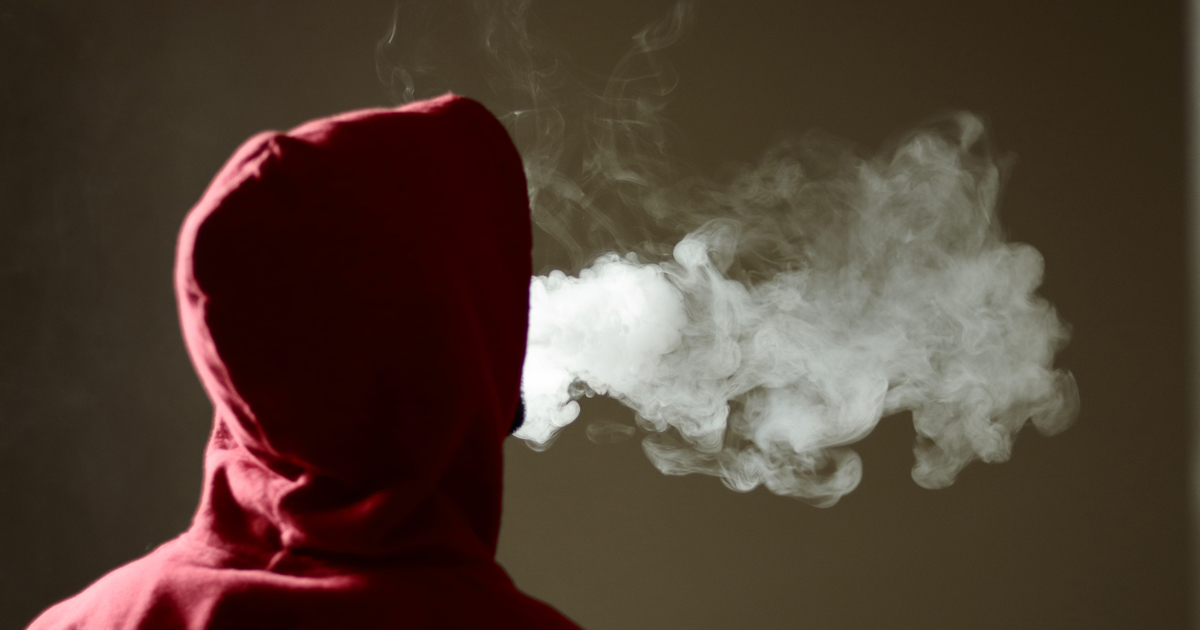7 signs your teen may be vaping

If you have young children or teens, it's probably crossed your mind. Is my child vaping and how do I know?
You have reason to be concerned. The number of youth engaging in vaping is rising at an alarming rate. The Centers for Disease Control and Prevention's 2019 annual National Tobacco Survey (CDC) estimates that 27.5% of our youth reported using an e-cigarette within the last 30 days. This was up from 20.8% in 2018.
Additionally, a survey released by the National Institutes for Health (NIH) in early 2019 found that 37% of 12th graders reported vaping in 2018, compared with 28% in 2017.
Unless you catch your child in the act, it can be difficult to determine if they are actually vaping.
The best approach is to have regular conversations with your child about the use of e-cigarettes and tobacco products, and hope you can have a positive impact on their habits. You should also be aware of the friends and company that your child keeps. If they are e-cigarette or tobacco users, there's a good chance your child is using these products as well.
While it is definitely easier for your child to hide a vaping habit than a cigarette smoking habit, with a little bit of detective work and staying in tune to your child's routines, there are a few cues you can watch for that may be an indication your child is vaping.
Signs a person is vaping
1. A sweet scent in the air
Before the recent ban, many vaping pods included sweet flavors that were often preferred by teens and may linger in the air after vaping. While these were recently banned to curb teen vaping, your child may still have some of the banned product left or maybe you recall a sweet smell in your child's room in the past.
2. Unfamiliar pens and USB drives
While e-cigarettes come in many forms, the most common look like a writing pen or a USB flash drive. E-cigarette devices, however, will have holes on each end.
3. Drinking more water
Vaping can cause dehydration or dry mouth, most likely a cause of the ingredient in the e-liquid called propylene glycol. If your teen is drinking more water or has dark circles under their eyes, a symptom of dehydration, you may want to investigate further.
4. Nosebleeds
If you notice that your child is experiencing nosebleeds, vaping may be the culprit. Propylene glycol, one of the chemicals in the e-liquid, is a dehydrating chemical that can reduce moisture inside the nose. When a person vapes, they typically exhale vapor through the nose, causing dryness, which can lead to nosebleeds.
5. Smoker's cough or mouth sores
Recent research is now linking E-cigarettes to mouth sores that won't heal as well as a smoker's cough. Apparently, the vapors upset the immune system and can have negative effects on human cells.
6. New batteries and chargers
Most vaping devices require rechargeable or batteries that require changing every two hours of use. Some, however, can be charged with a USB cable. Be aware of unfamiliar batteries or battery charging devices.
7. Discarded vaping pods and devices
If you find items such as discarded cotton balls, thin metallic oils, pods or atomizers (the small devices that turn the liquid into vapor) in your child's backpack or trash, your child is likely vaping.
How bad is vaping?
It's definitely not good and the scary thing is, it's too early to know what type of long term complications we may see from this addictive habit.
Here's what we do know. Vaping uses a battery powered device called an e-cigarette that warms a liquid, turning it into a vapor that can be inhaled. The liquid is typically purchased in pods and comes in a variety of flavors. Most e-cigarette pods contain nicotine that is often more concentrated than in cigarettes and impacts brain function, attention and memory. For instance, JUUL pod packs can provide as much nicotine as one pack of cigarettes.
When heated, the e-liquid, which usually contains propylene glycol, glycerol, nicotine and chemical flavoring, turns into an aerosol. This aerosol contains some of the same toxic chemicals found in cigarette smoke such as formaldehyde, chromium, lead and nickel, exposing the lungs to toxic metal particles and other cancer-causing chemicals.
Even more harmful is the fact that other substances can also be used with e-cigarettes including marijuana and hash oil, opiates and dangerous synthetic substances like flakka and “synthetic weed” such as K2 and Spice. The use of marijuana in e-cigarettes has been associated with the national outbreak of lung injury and death in youths over the past year.
While the use of e-cigarettes has been touted as a means to help people quit smoking, there is no evidence to show that it actually helps smoking cessation, and in fact, research reveals that you're more likely to start smoking if you vape.
In teens, the addictive nature of nicotine is even more severe. The adolescent brain is more susceptible to nicotine, causing the brain to crave it more and making teens more likely to progress to cigarette smoking.
In my opinion, there is nothing positive about vaping. Unfortunately, we are still 10 to 15 years away from understanding the full long term effects from this harmful habit.
In the meantime, the best way to prevent your child from engaging in vaping is to continue to have open conversations and stay keenly aware of their habits.
Need a doctor's opinion?
If your child is experiencing worrisome symptoms that may be linked to vaping, schedule an appointment now with one of our primary care specialists. We're here to help. Call 800.922.0000.







